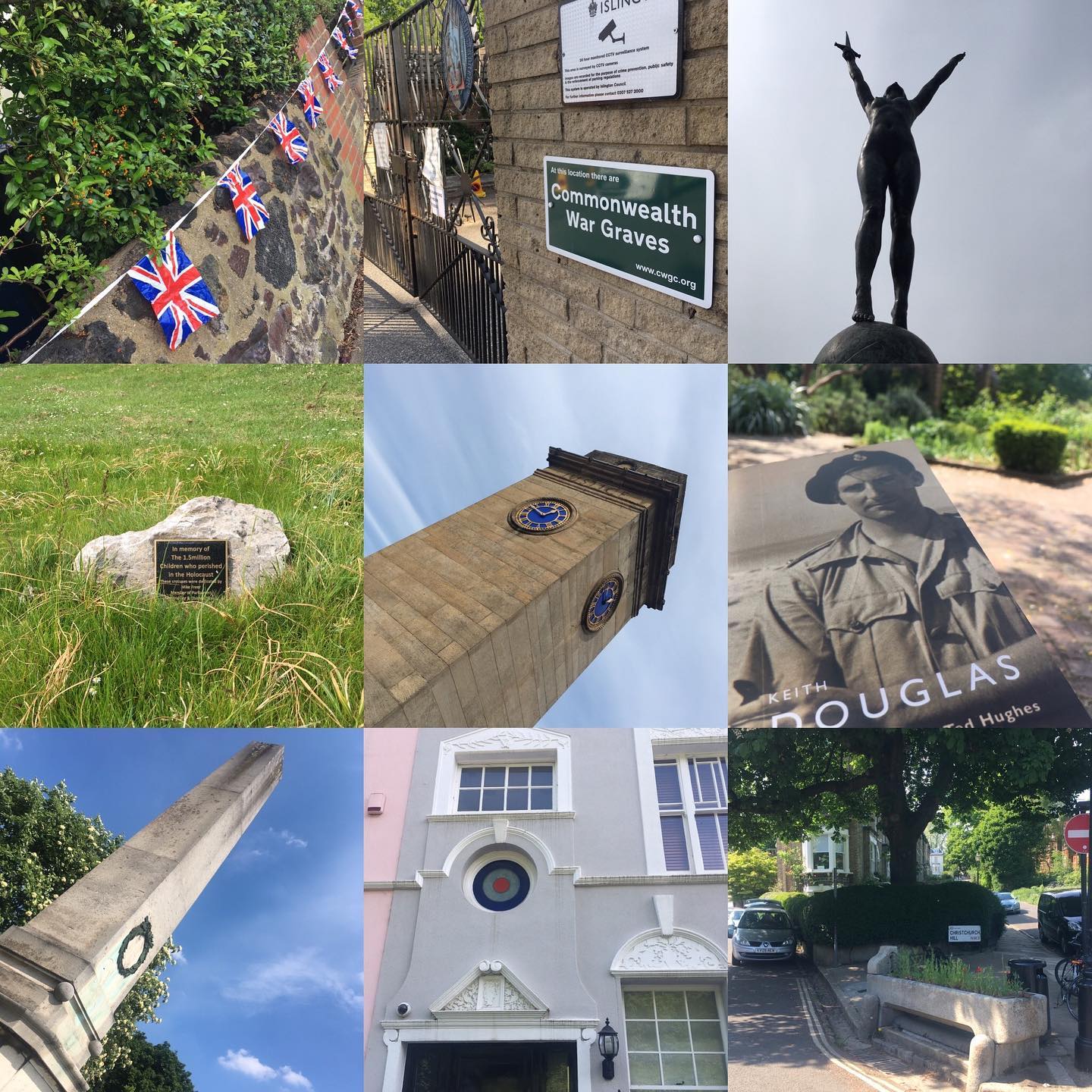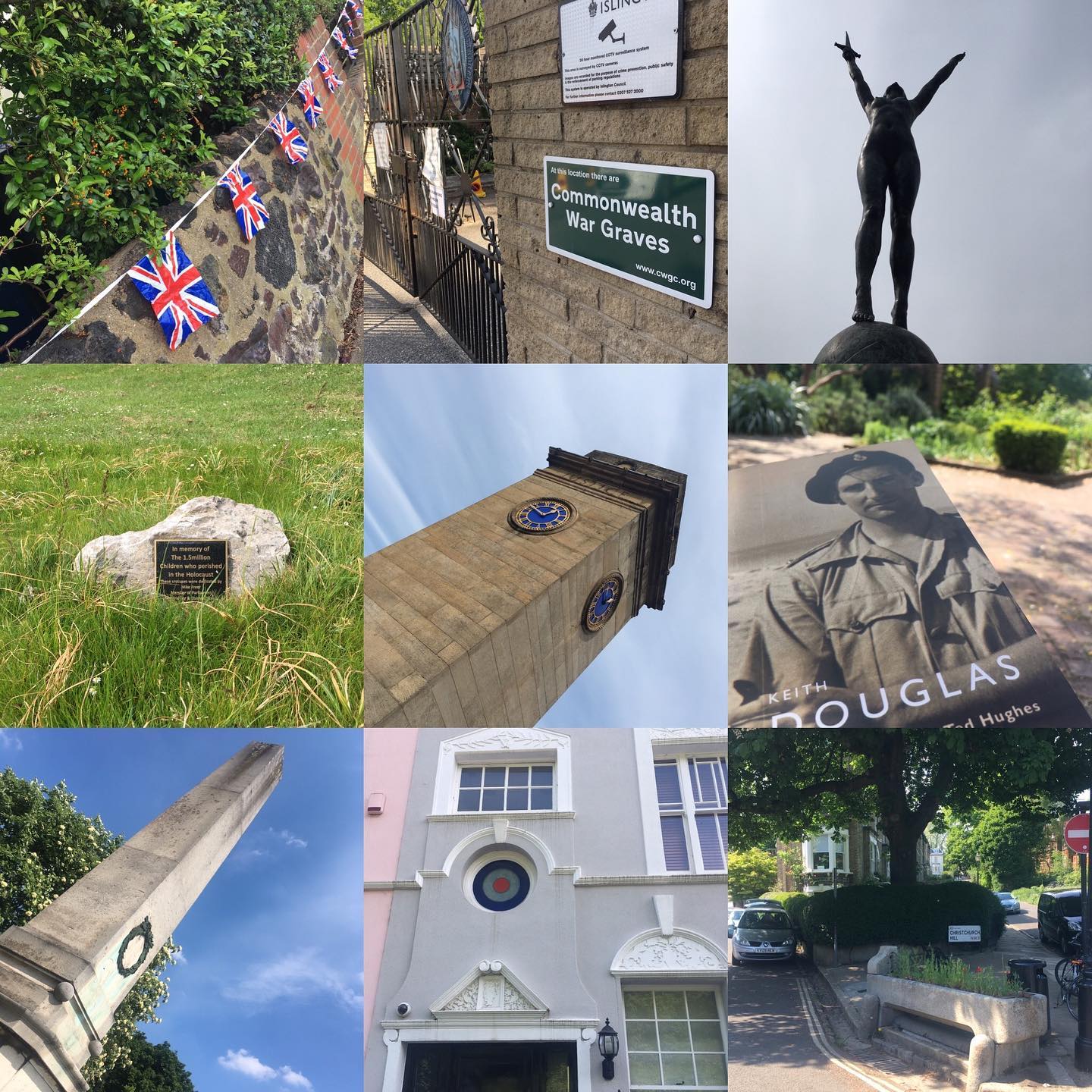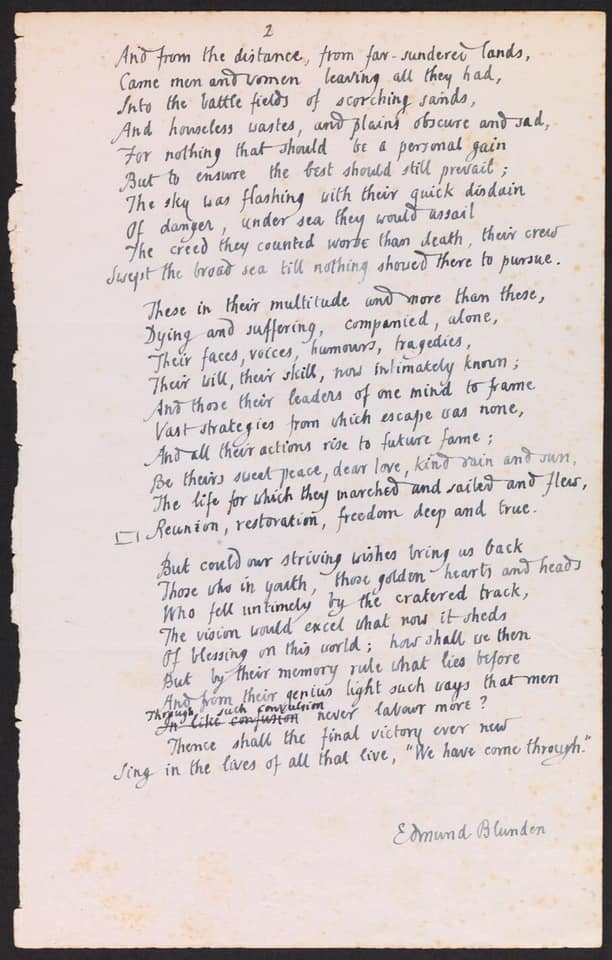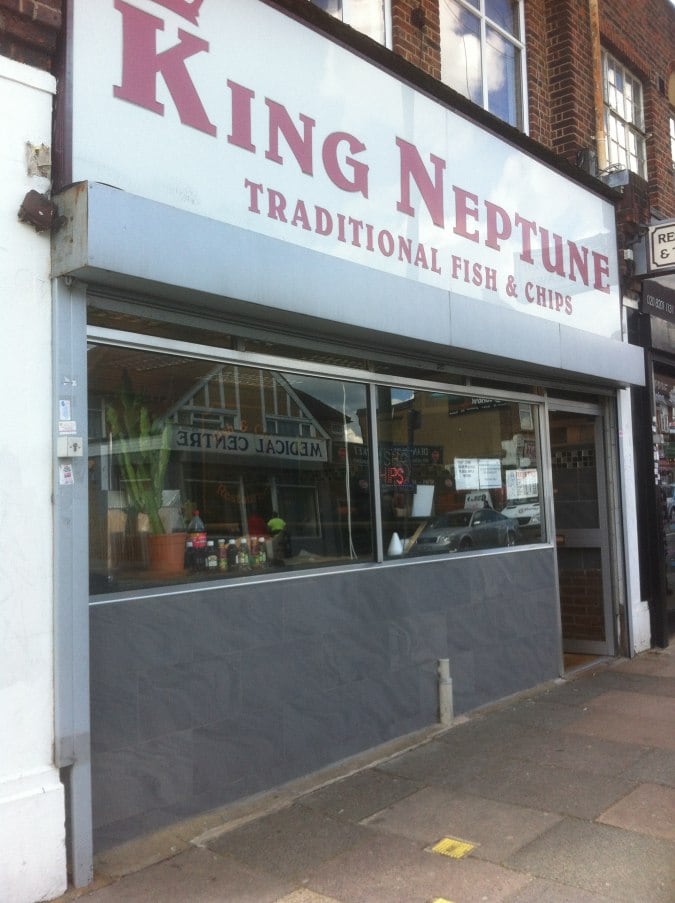Archive for the ‘poetry’ Category
Coincidence No. 347 – Keats
A post on Simple Pleasures part 4, prompted by a Poem on the Underground eight days ago, quoted a famous line from John Keats’ Endymion.
Three days ago a gift was received at ArkAngel HQ – an 1894 copy of selections from Keats’ poems published by Routledge (with whom ArkAngel is currently in discussions about a book).



Just before drafting this post a quick search for RH Tawney revealed he is not some long-forgotten Victorian reader but a significant figure in British economic history. Richard Henry ‘Harry’ Tawney, according to that other double-initialled historian AL Rowse, “exercised the widest influence of any historian of his time, politically, socially and, above all, educationally.” Tawney was a leading Christian Socialist and a vocal champion of Adult Education.
He was born in 1880 (so was 16 when he acquired this volume) and died in 1962. On a plaque to him in Lissenden Gardens near Parliament Hill he is dubbed “Founding Father of the Welfare State”.
A Thing of Beauty

A thing of beauty is a joy for ever:
Its loveliness increases; it will never
Pass into nothingness
John Keats – ‘Endymion’ (currently featured in Poems on the Underground to mark the 200th anniversary of Keats’ death)
“Our first set of poems for 2021 is now on trains. Poems on the Underground is marking the 200th anniversary of the death of the poet John Keats, and features six poems written or inspired by Keats and his love of nature. These poems are:
An excerpt from Endymion by John Keats
An excerpt from Adonais by Percy Bysshe Shelly
Wish You Were Here by Julia Fiedorczuk
rising by Jean ‘Binta’ Breeze
I go inside the tree by Jo Shapcott
When I have Fears That I May Cease To Be by John Keats”
David Speed on Insta
The hidden beauty of the world
“Poetry lifts the veil from the hidden beauty of the world, and makes familiar objects be as if they were not familiar.”
Percy Bysshe Shelley, A Defence of Poetry and Other Essays
The same is true of street photography and Instagram at its best. And of Art in general.

Coincidences No. 114 & 115
WordPress is telling me I registered with it 14 years ago – digital time flies. To mark the occasion here’s one of those word coincidences we all have. The word is ‘helpmeet’ – “A helpful partner, particularly a spouse.” It comes from the Bible, in the King James’ version: “an helpe meet” for Adam i.e. Eve (Genesis 2:18). So this also marks the occasion of my Silver Wedding Anniversary this week. I always associate “helpmeet” with Eve in the Old Testament.
Now I haven’t thought about the word ‘helpmeet’, or even the more common ‘helpmate’, in many a year. But it cropped up twice today before 8.00am.
I am writing in my Faber & Faber Poetry Diary 2020. Opposite today’s date is a poem by Julia Copus, ‘Lacan Appeals to the Patient’. It has the line:
Beyond the clayey dark your helpmeet is waiting.
It is clear this particular helpmeet is masculine and I think it refers to the sculptor in the poem which I understand to be the Creator, perhaps God, perhaps some other kind of artist or higher being. The name Adam means ‘red earth’ or perhaps ‘red clay’. It is the substance God moulded the First Man from in the Bible and this poem is about the shaping of “one’s selfhood”.

Started during lockdown, I am now up to page 242 of James Joyce’s Finnegans Wake. Today’s page contains this line:
Helpmeat too, contrasta toga, his fiery goosemother, laotsey taotsey, woman who did, he tell princes of the age about.
To be honest I’m a bit lost in this chapter – it’s about the three children in the story, two brothers (a bit like Cain and Abel from Genesis) and a sister. It has a lot of references to fairy tales and nursery rhymes, hence “fiery goosemother” = fairy godmother meets goosey goosey gander. “laotsey taotsey” may echo ‘goosey goosey’. “Fiery” may relate to the fact that one of the brothers (the one this sentence is about, I think) is associated with the devil. “Helpmeat” will be a deliberate pun/misspelling as that is the nature of the novel. I’m fairly sure it is referencing biblical Eve. Joyce had a strong Eve character in his own life – his wife Nora Barnacle from Galway. What the woman “did” I’m not sure, but it might include eating the forbidden fruit. The man might well find that something to tell princes and others about.
“laotsey” is a reference to Lao-tse, the ancient Chinese philosopher and central figure in Taoism. The Woman Who Did is a Victorian novel (1895) by Grant Allen. “taotsey” may be related to ‘tutti’ type words i.e. ‘all’. Finnegans Wake is constructed from such layers of meaning and reference. The trick with both Finnegans Wake and Ulysses is not to get too hung up on understanding every word.

My edition of Finnegans Wake is a Penguin Modern Classic. But of course the original publication was by the bold, Modernist Faber & Faber. So that is Coincidence No. 115.
VE Day 75 – The Walk

Beginning of my VE day walk – a lone hint of celebration on our street – East Finchley, London N2

Coronavirus has stopped normal access to the commonwealth war graves in St Pancras & Islington cemetery

The commonwealth war graves in St Pancras & Islington cemetery earlier in the lockdown (before they closed the cemeteries)

I’m sitting just beneath Emile Guillaume’s La Délivrance known locally as The Naked Lady – it’s a WW1 memorial but it is opposite the flat where my great-uncle Bruno lived, a concentration camp survivor & refugee from Leipzig Germany, so its WW2 victory for me

Flowers for children VE Day 75, Henly’s Corner

The clock tower memorial to WW1 & WW2 at Golders Green with its distinctive blue

WW2 poetry Keith Douglas in flower garden at Golders Hill – wisteria no hysteria, stiff upper lip
Comment: unicornsalmost
This Sunday, on @bbcradio3 : Unicorns, Almost – a play about the life and poetry of Keith Douglas https://www.bbc.co.uk/programmes/m000j2bn

Hampstead war memorial to both world wars – a few hundred yards from where I was born, overlooking all of London

Film location of ‘Allied’ movie with Brad Pitt & Marion Cotillard set during WW2

Film location of ‘Allied’
I met a family sitting out on their front steps down the road from here, told them what I was doing and they pointed me to…

Nicholas Winton saved 669 Jewish children from the Nazis when based in this house in Hampstead

Liam Gallagher‘s RAF roundel window at his old place in Hampstead

Photographer Lee Miller‘s house Hampstead – she photographed WW2 for Vogue magazine including the liberation of Dachau & Hitler’s bathtub in Munich

My dad remembered vividly a doodlebug V1 exploding in the corner of this pond near his childhood home – I never walk by without thinking of him Hampstead Heath, VE day 75

George Orwell‘s house – his wife Eileen O’Shaughnessy worked at the Ministry of Information during WW2 (in the censorship department) in Senate House, University of London & he famously used it as the model for the Ministry of Truth in 1984 – Orwell was in the Home Guard & broadcast for the BBC

That’s the VE day 75 walk done – 9 hours, 24,600 steps, good fun
VE Day 75

8th May 1945, Trafalgar Square
The current situation of lockdown under threat of a deadly viral enemy is as close to war as my generation has ever come which makes it a most resonant time to celebrate this landmark VE Day, the 75th.
My most memorable VE day to date was one spent in Bangor, Co. Down, N. Ireland when my wife was working on the BBC’s live coverage of the event which involved the lighting of a string of lanterns right round the British coast. To help her manage the day, with a very demanding, experienced and alcoholic director, I looked after one of the main contributors, a charming old fella from Belfast who had survived the Belfast Blitz of 1941. I spent the day hanging out with him, chatting and making sure he felt looked after. He was interviewed in the evening by John Cole.
Today’s VE day I marked with a themed walk, made up last minute, partly on the fly. I came up with the idea while sitting in the garden in the early morning sunshine. By 9am I was on the road. 9 hours and 24,600 steps later I returned home.

I’ll publish the details of the walk tomorrow – it ranged from photographer Lee Miller’s house to Liam Gallagher’s RAF roundel window, from the location of a Brad Pitt war movie to a tribute to the 1.5 million Jewish children killed in the holocaust.
Half way I stopped to read some of Keith Douglas‘ poetry, a WW2 poet stationed largely in North Africa. He died shortly after D-Day at the age of just 24. The line
but time, time is all I lacked
from the last poem in the volume (a selection by Ted Hughes) seemed to sum up his artistic life. There’s a radio play about him on Radio 3 on Sunday (10th May) at 7.30pm called ‘Unicorns, Almost‘ by Owen Sheers.
I began the day by sharing an unpublished poem by Edmund Blunden entitled ‘V Day’. it’s in the manuscript collection of the Imperial War Museum. It concludes with the line:
We have come through.
which seems very apposite and inspiring for these strange days.



Edmund Blunden – a WW1 poet who was still writing in 1945

Keith Douglas
Hope quote
Hope is the thing with feathers
That perches in the soul
Emily Dickinson

Hope is the thing with feathers
That perches in the soul,
And sings the tune without the words,
And never stops at all,And sweetest in the gale is heard;
And sore must be the storm
That could abash the little bird
That kept so many warm.I’ve heard it in the chillest land,
And on the strangest sea;
Yet, never, in extremity,
It asked a crumb of me.
Between starting this post and writing this last paragraph I was just outside with my neighbours clapping the NHS and frontline workers battling the coronavirus on our behalf. Someone down the street has taken to letting off a firework to mark this weekly occasion. When he fired off his rocket this evening a frightened sparrow flew over my head.
Finishing art works [quotation]

Glen Head, Glencolmcille
When I was on a painting holiday in Glencolmcille, Donegal in the summer I found myself thinking about how do you know when you have finished a work of art? When are you just noodling? It’s a key question for artists in all disciplines.
The French poet Paul Valéry put it well and WH Auden boiled down Valéry’s words to this:
‘A poem is never finished; it is only abandoned.’

Paul Valéry – photograph by Henri Manuel

WH Auden
Background on this quotation and its attribution.
I recently heard, in connection with my Art Vandals project, about the occasion when the French Impressionist painter Pierre Bonnard in his later years was arrested in the Louvre with a small palette and brush, retouching one of his paintings. The security guards grabbed him – he was shouting “But I am Bonnard! It’s my painting!” – and they responded “The painting is in the Louvre. It’s finished!”
Memory and the Internet
I’ve just woken up with the phrase ‘Electrical Discount Warehouse’ in my head. I’m fairly sure that was the name of a shop in the parade of shops in the neighbourhood where I grew up. I was trying to recall it at lunchtime yesterday when talking to my mother about that small group of shops and trying to finish reconstructing it with her. It’s always a surprising reminder of the activities of the Unconscious during sleep when you wake up having remembered something you struggled to recall when awake.
So why was I trying to reconstruct the shopping parade from memory? I was driving past it a few days ago (New Year’s Eve) and when I saw the chemist the name Brian Luckhurst sprang to mind, out of nowhere – haven’t thought about it or him for years. Now I write the name down I can begin to see his bald pate and his person. From that thought, the sudden emergence of his name, came the question: What else was in this parade when I was a child (c.1969-1975)? It’s the kind of memory game people in prison must play. It reminds me of Terry Waite and John McCarthy.
The neighbourhood was called The Green Man after the local pub. One of my first jobs after university was working in that pub. I went in to get a bar job and the manager took one look at my John Lennon glasses and my lily-white hands and said “Accounts”. I enjoyed doing accounts, because unlike with Literature (Modern & Mediaeval Languages = foreign literature), there was an answer. It was therapeutic. By then the name had changed to The Everglades, shifting from English tradition (Robin Hood, forestry) to American exoticness (the Florida swamps – there was an ingredient I saw in the accounts every week, “jalepenos” that matched this exoticism – I was uncertain what on earth they were). I have no idea what the pub or building is called now – it still stands. The ‘race memory’ of the place is captured in the persistence of Green Man as the local name for the junction. There are no signs anywhere that actually say Green Man.
After the internet and advent of the Worldwide Web parochial memories like this by and large tend to get recorded somewhere or other. Before they were much more likely to die away, existing only in stray photos, perhaps local publications, mainly people’s heads. Some of the early films in my career are really hard to find online – my first was in 1987 (as producer-director-writer). Often there is just one artefact to be found – an image or a reference.
Let’s test that one: (“Adam Gee” “The Best” Melrose) [Melrose = production company]…
It draws a total blank, other than where I have recorded it online (i.e. IMDb). I first remember working online in the mid 90s, a couple of years after making The Best.
Of course the efficiency of the search engine(s) is an issue. Thinking about this I remember coming across the film online. It was on a British Film Institute catalogue but it seems to be too deep or the site too poorly constructed to show up in the early pages of search results.
So the memory of the WWW only gets you so far. And there’s still arguably a merit in capturing certain things from in your head and publishing them online. We all know how trivial things can come to have significant meaning in certain contexts.
So for posterity here is what I have managed to reconstruct of The Green Man – from my own memory, with input from my mother and brother, and prompted by those discussions also from my head:
- Brian Luckhurst chemist – which started the memory ball rolling…
- Dr Burke’s surgery – 2 Selvage Lane, what I passed to get to the shops
- The Railway Tavern pub – not really attached to the parade
- Pet shop on the corner – I can recall the sawdust on the floor, the smell (not unpleasant), and the owner in his grey lab-style coat (Champions? see below)
- Eric & Mavis newsagent/sweet shop – the other end of that first row of shops, formerly The Penny Shop (sweet shop)
- Express Dairy outlet – down an alley beyond E&M
- window shop? glass?
- Neptune fish & chips shop – over the road, opposite corner; chips were 5p in 1971 at point of decimalisation
- Post Office – sold singles (ex-juke box), where I bought my first 45: T-Rex, Solid Gold Easy Action
- Green Grocer – had a delivery boy who rode a heavy black bike, he turned up later in a rockabilly group called The Polecats (who had a modest hit with a rockabilly-punk cover of David Bowie’s John I’m Only Dancing) – his name was something like Bez (real name Martin)
- plumbers merchants??
- launderette??
- Mautners deli
- Electrical Discount Warehouse – a slightly later arrival my father was attracted to as a physicist who made electrical instruments
- bookies???
- butcher? (Lewis?)
- Martin’s newsagent
- Women’s hairdresser (Friends???) – end of the Neptune stretch of shops, so the two sides are: Pet Shop-Eric & Mavis, Neptune-hairdresser
- The Green Man pub – which gave its name to all this
- Mobil garage
This represents, I would estimate, over 50% of the shop units at The Green Man junction. If I was banged up in a Beirut cell for a few years, I wonder how much more my mind is capable of retrieving?
To conclude this Sunday morning reflection on memory, individual and group recall, and the internet, let’s see what the Web can find visually of these fragments I have retrieved…
One tiny picture of The Green Man pub from a personal collection of pub pictures in the locality (personal local history site)

Green Man – Hale Lane, Edgware
A shot of the pet shop part of the parade froma specialist bus site

Alan Le???? was a second hairdresser I think. To its left in the image seems to be some kind of office (solicitor? accountant?) – the pet shop is behind the back of this 221 Routemaster bus. The phone number on the office is 0181 so after the expansion of 01 London numbers to 081 to 0181 making this around 1995 so the photo must be misleading in that the bus was vintage at this juncture.
A good picture of the pub from well before my time (must have been rebuilt in the 30s) from a pub wiki

T. Gill was the publican
Another early photo of the pub from the local authority archives

There seems to have been a garage attached – the Mobil garage ended up on the other side of the pub
A more recent photo of The Green Man building from Tripadvisor labelled “Greenman, Edgware (As it used to be called)”. This iteration is (ugh) The Jolly Badger.

You can see the clapboard fabric of The Green Man building and the Mobil garage (now a different brand).


So, so far, only one image from the era in question – the very first one, small and black & white.

Although this one looks old it is labelled 1983 and Everglades, so just before I worked there with the jalapenos.
I just found by chance this reference to the pet shop on a local blog:
4. The Pet shop at The Green Man. I’m sorry to say I can’t recall the name of this. Please leave a comment if you can. I was never allowed to keep pets, but we loved fishing and this was the place I bought my first floats, fishing line and maggots. I had acquired a fishing rod at a local jumble sale, one of the old bamboo style efforts, with a cork handle and rubber bung on the end. It came with a Hardy reel, which I soon found out was a fly fishing model. I traded this for a more suitable coarse fishing model, having restored it to working order. I recently saw a similar model on sale for nearly £200. I think I didn’t get the best of that deal!
Glyn Burns said…
I think the pet shop at the Green Man was called Champions.
5 August 2019 at 05:44

survives little changed
Bottom line, just the one tiny contemporary photo; establishments that have survived the decades; personal memories.
Here at King Neptune is an apposite place to conclude as it is the Fisher King at the very end of T.S. Eliot’s The Waste Land who says:
These fragments I have shored against my ruins
As one commentator puts it: “the king will do his best to put in order what remains of his kingdom”. The gathering of fragments. Of memories. Striving for order. Constructing and reconstructing visions and patterns. Setting the lands in order.
I sat upon the shoreFishing, with the arid plain behind meShall I at least set my lands in order?London Bridge is falling down falling down falling downPoi s’ascose nel foco che gli affinaQuando fiam uti chelidon—O swallow swallowLe Prince d’Aquitaine à la tour abolieThese fragments I have shored against my ruinsWhy then Ile fit you. Hieronymo’s mad againe.Datta. Dayadhvam. Damyata.Shantih shantih shantih
 Leave a comment
Leave a comment






